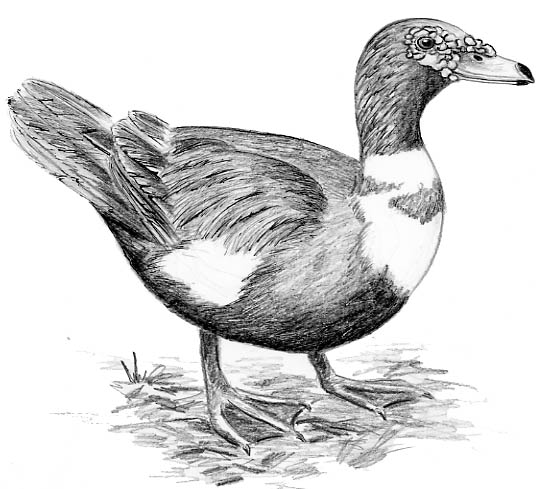
Dear Bird Folks,
On a recent trip to Florida I saw one of the oddest birds I’ve ever seen. Every morning this rather large but weird-looking duck would come wandering through our campsite. (Oh, I forgot to tell you that we were camping.) It didn’t seem to be afraid of us, but we were a little afraid of it. The duck had these grotesque-looking lesions all over its face. We wondered if the duck had some kind of infection, but another camper told us that it was a “Muskie Duck” and they are supposed to look like that. I tried looking it up online, but found nothing. Have you ever heard of or seen a Muskie Duck?
Joyce, Champaign, IL
Oh yeah, Joyce,
I’ve heard of Muskie Ducks. However, I’m surprised you saw one in Florida. The ones that I am familiar with come from Maine and have played a significant role in Maine politics. I remember one year when…wait, that’s not right. I have this wrong. I’m thinking about Ed Muskie, the guy who ran for president in 1972. He wasn’t a duck at all. And even though he wasn’t the best-looking man, he certainly wasn’t “grotesque.” I’m beginning to think you didn’t see a “Muskie Duck,” since there is no such thing. What you saw, Joyce, is a Muscovy Duck. They are quite common in Florida and, as far as I know, none has ever run for president. I know you didn’t suggest one did run for president, but I’m just trying to get things straight in my own mind.
Over the years I have written about many different species of ducks. Often I will say that a duck is strikingly handsome or brilliantly ornate. You will not hear me make that same statement about the Muscovy. It is one nasty-looking creature. I am sure I’m going to hear from people out there who love Muscovys. They will be upset with me for calling their favorite birds “nasty-looking,” but I don’t care. This is one foul-looking fowl. Even the Ugly Duckling feels better about itself when the Muscovy is around. I’m not saying that it’s a bad bird, but appearance wise it definitely comes out second best when compared to a Wood Duck, a pintail or a road killed toad.
There are three kinds of Muscovys. There’s the uncommon wild Muscovy. There is a domesticated one that is raised for food and eggs. And finally, there is a feral Muscovy. Feral Muscovys are basically domesticated birds heard that they were being raised for food and decided to go AWOL in order to avoid the ax. The wild birds are native to Mexico and Central and South America. When the first Europeans arrived they found that the local people had already domesticated the Muscovy. The Europeans immediately shipped crates of the fat ducks back home, along with tons of gold, silver and whatever else they could steal from their American hosts.
The duck’s name comes from the Muscovy Company, one of the first importers of the bird. Europeans simply associated the duck with the importer and the name stuck. Some people have mistakenly thought that the bird was named for its musk oil gland. Like most ducks, Muscovys have an oil gland, but there is no musk smell to it. In fact, Muscovys have no musk smell at all. I believe their real smell is more like English Leather.
Wild Muscovy Ducks are black with white wings. The domestic birds are mostly white, while the feral ducks can be just about any assortment of white, black and brown. The feral birds also interbreed with mallards or any other duck that doesn’t mind the smell of English Leather. These odd looking cross breeds are called “mules,” and like four-legged mules they are sterile and very stubborn. By crossbreeding Muscovys, farmers are able raise birds that are much larger than the wild ones. Breeders in Australia have developed a Muscovy that tips the scale at nearly 20 lbs. Of course, these Australian birds are much too heavy to fly, but they do have a handy storage pouch and can hop great distances.
Muscovys make quiet neighbors and aren’t nearly as noisy as those quacking mallards. However, it’s their looks that make them hard to warm up to. Those facial growths that you so lovingly referred to as “grotesque-looking lesions,” are called “caruncles.” I’m not really sure what purpose they serve, but they make this duck’s face look like a cross between a turkey and a teenager in need of a gallon of Clearasil.
It’s not surprising that you saw a Muscovy in Florida, Joyce. This duck likes water, warm weather, mosquitoes, and people…and Florida certainly has plenty of all four. Like anything else, I heard that some people complain when this large, ugly duck starts hanging around their property. But on the whole the Muscovy does more good than harm. It eats its share of mosquito larvae, is usually quiet and occasionally runs for president. No, wait. Again, that last one is Ed Muskie. I have to stop doing that.